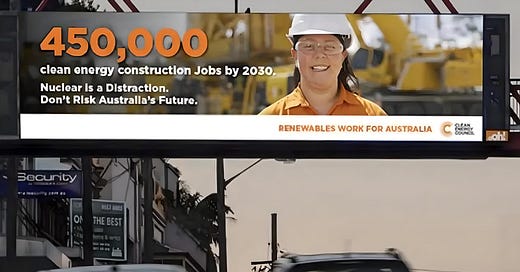Desperate measures
If renewable energy is so good, why is big wind and solar worried about competition from nuclear?
The Clean Energy Council describes itself as the peak body for the clean energy sector. It is not. It is a powerful, cashed-up lobby group promoting the interests of wind, water and hydro generators with a mission to kill nuclear energy stone dead in Australia.
Last month, the council launched a multimillion advertising campaign on animated digital billb…
Keep reading with a 7-day free trial
Subscribe to Reality Bites By Nick Cater to keep reading this post and get 7 days of free access to the full post archives.




